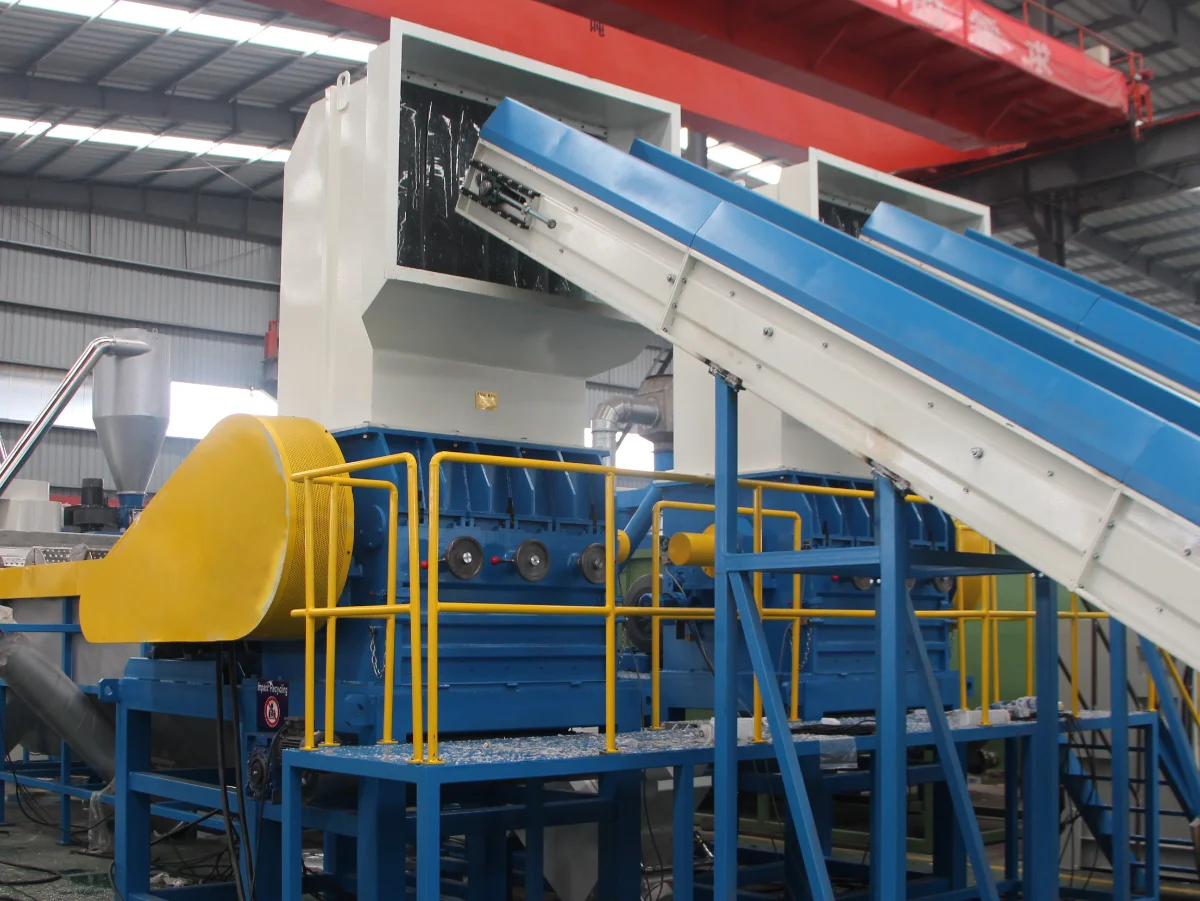In the realm of plastic recycling, wet plastic grinding machines have emerged as a pivotal technology, offering a myriad of benefits over their dry counterparts. These machines, designed to process various types of plastics with precision and efficiency, incorporate water into the grinding process to enhance the quality and speed of plastic size reduction. This guide delves into the functionality, benefits, and applications of wet plastic grinding machines, drawing insights from industry experts and leading sources.
Contents
Introduction to Wet Plastic Grinding Machines
Wet plastic grinding machines, akin to their general-purpose counterparts, utilize a rotor mounted with ultra-durable high-carbon, high-chromium steel knives. The introduction of water directly into the cutting chamber is a distinctive feature that sets these machines apart. This process not only aids in the preliminary cleaning of plastic by loosening dirt and contaminants but also serves as a lubricant for the blades, significantly reducing friction and heat buildup. Consequently, this results in extended blade life and minimizes dust buildup within the facility.Learn more about these machines
Key Advantages
- Efficient Cleaning and Lubrication: The water spray within the cutting chamber facilitates partial cleaning of the plastics, effectively removing surface contaminants. This pre-treatment step enhances the overall quality of the recycling process.
- Extended Operation and Reduced Maintenance: By minimizing blade friction and preventing heat buildup, wet grinding processes drastically extend the operational lifespan of the machines and the need for blade sharpening.
- Enhanced Safety and Environmental Benefits: Wet grinding significantly lowers the risk of dust accumulation, offering a cleaner, safer work environment and contributing to environmental sustainability efforts.

Working Principle and Technical Specifications
At the heart of a wet plastic grinding machine is an open rotor, equipped with durable knives, spinning at high speeds to chop plastics into small pieces. Water introduced into the chamber acts both as a coolant and a cleaner, aiding in the granulation process and ensuring that the output material is free from excessive contamination. The technical specifications of these machines vary, with models designed to handle different capacities and plastic types, ensuring there’s a suitable machine for every recycling operation.
Applications and Versatility
Wet plastic grinding machines excel in processing a wide array of plastic materials, including PET bottles, plastic films, and rigid plastics. Their versatility makes them an excellent choice for recycling operations looking to process mixed streams of plastic waste. While these machines may represent a higher initial investment compared to dry granulators, the long-term savings in maintenance and enhanced product quality justify the expenditure.Explore their applications.
Maintenance and Operational Efficiency
Proper maintenance is crucial for ensuring the longevity and efficiency of wet plastic grinding machines. Routine sharpening and rotation of knives, along with regular inspections to avoid foreign material intake, are essential practices. Additionally, keeping the screen unclogged and the motor and bearings well-lubricated can prevent potential operational disruptions.Learn how to maintain these machines.
Conclusion
Wet plastic grinding machines stand at the forefront of plastic recycling technology, offering unparalleled benefits in terms of operational efficiency, maintenance, and environmental impact. As the recycling industry continues to evolve, these machines represent a significant step forward in the pursuit of more sustainable and effective plastic waste management solutions.
By adopting wet plastic grinding machines, recycling operations can achieve higher quality recycled materials, contributing to the circular economy and reducing the environmental footprint of plastic waste. The integration of such advanced technologies is essential for the future of plastic recycling, emphasizing the importance of innovation and sustainability in the industry.
Frequently Asked Questions about Wet Plastic Grinding Machines
What is a wet plastic grinding machine?
A wet plastic grinding machine is a specialized recycling equipment designed to grind various types of plastic materials with the addition of water during the grinding process. This method enhances the cleaning of materials, reduces heat and friction, and extends the lifespan of the machine’s components.
How does a wet plastic grinding machine work?
It operates with an open rotor equipped with high-carbon, high-chromium steel knives. Water is sprayed directly into the cutting chamber, acting as a lubricant and coolant, facilitating the granulation of plastics into small, uniform pieces while partially cleaning them.
What are the advantages of using a wet grinding process?
The wet grinding process offers several benefits including improved cleaning and lubrication of materials, extended operational times before maintenance, reduced dust buildup in the facility, and overall, a more efficient recycling process.
Can wet plastic grinding machines process all types of plastics?
Yes, these machines are designed to handle a wide range of plastic materials, including PET bottles, plastic films, and rigid plastics, making them suitable for various recycling operations.
How do you maintain a wet plastic grinding machine?
Routine maintenance includes sharpening and rotating the knives, ensuring foreign objects are kept out of the machine, monitoring the screen for clogs, and keeping the motor and bearings well-lubricated.
INQUIRIES
To get the latest prices and lead times, send us a message using the form below.




